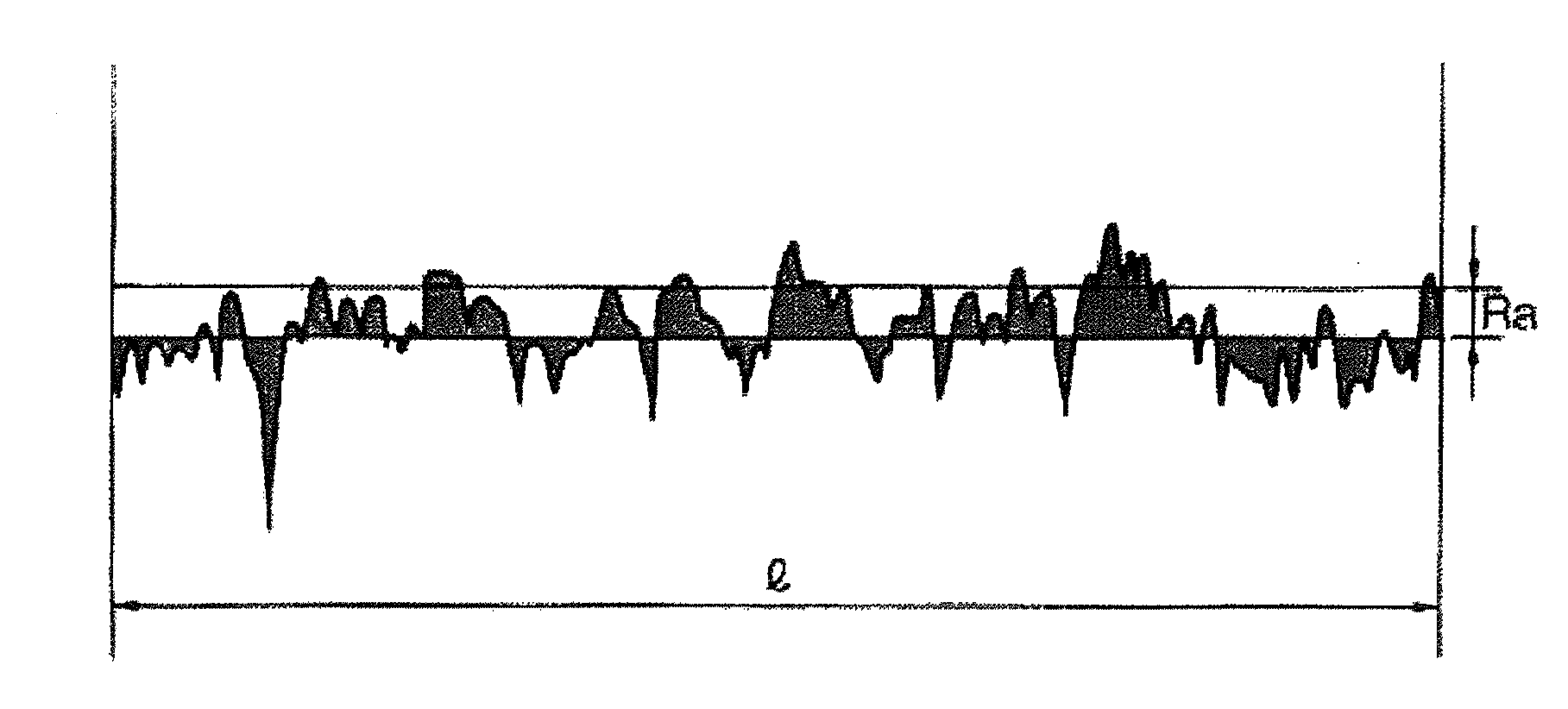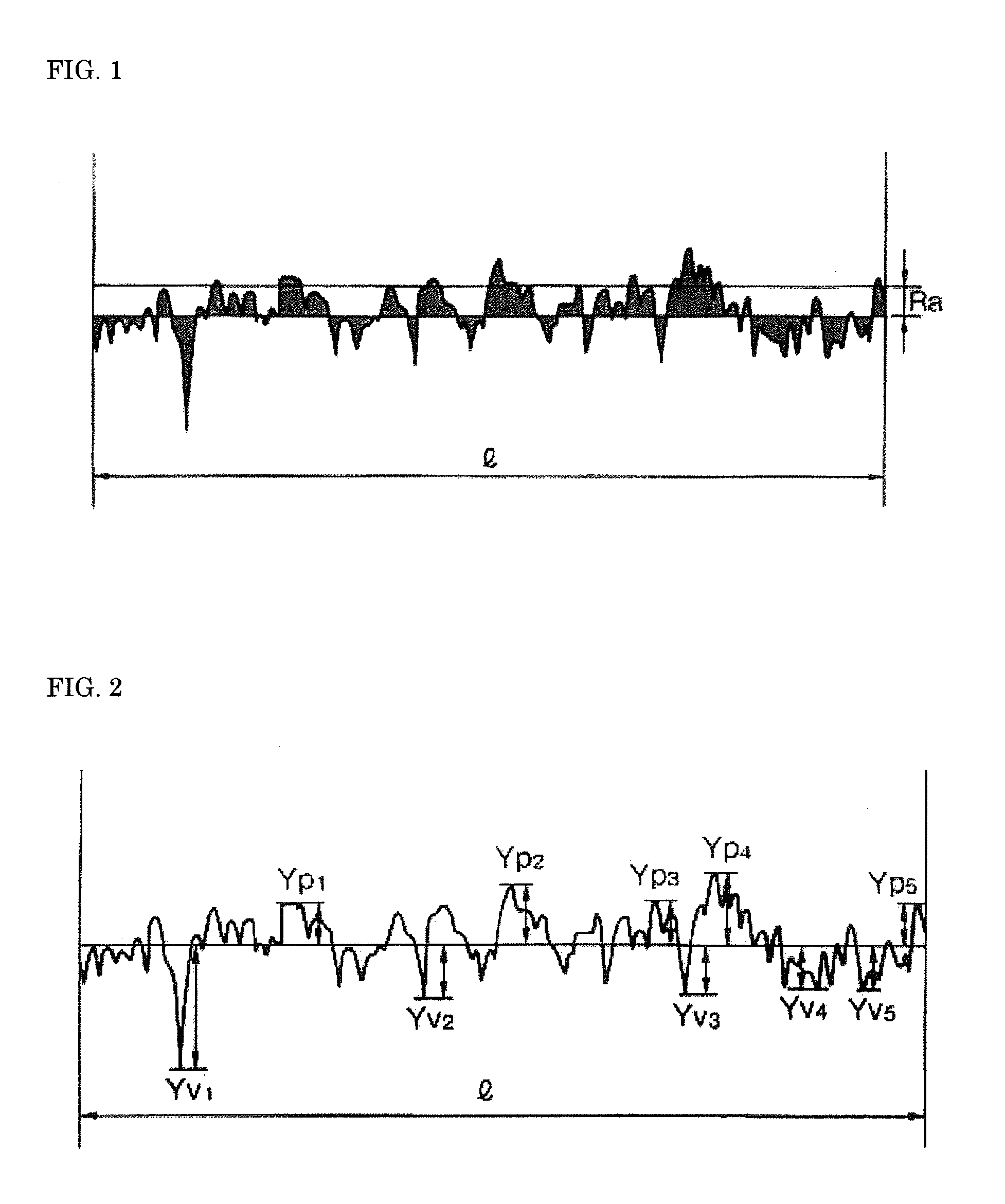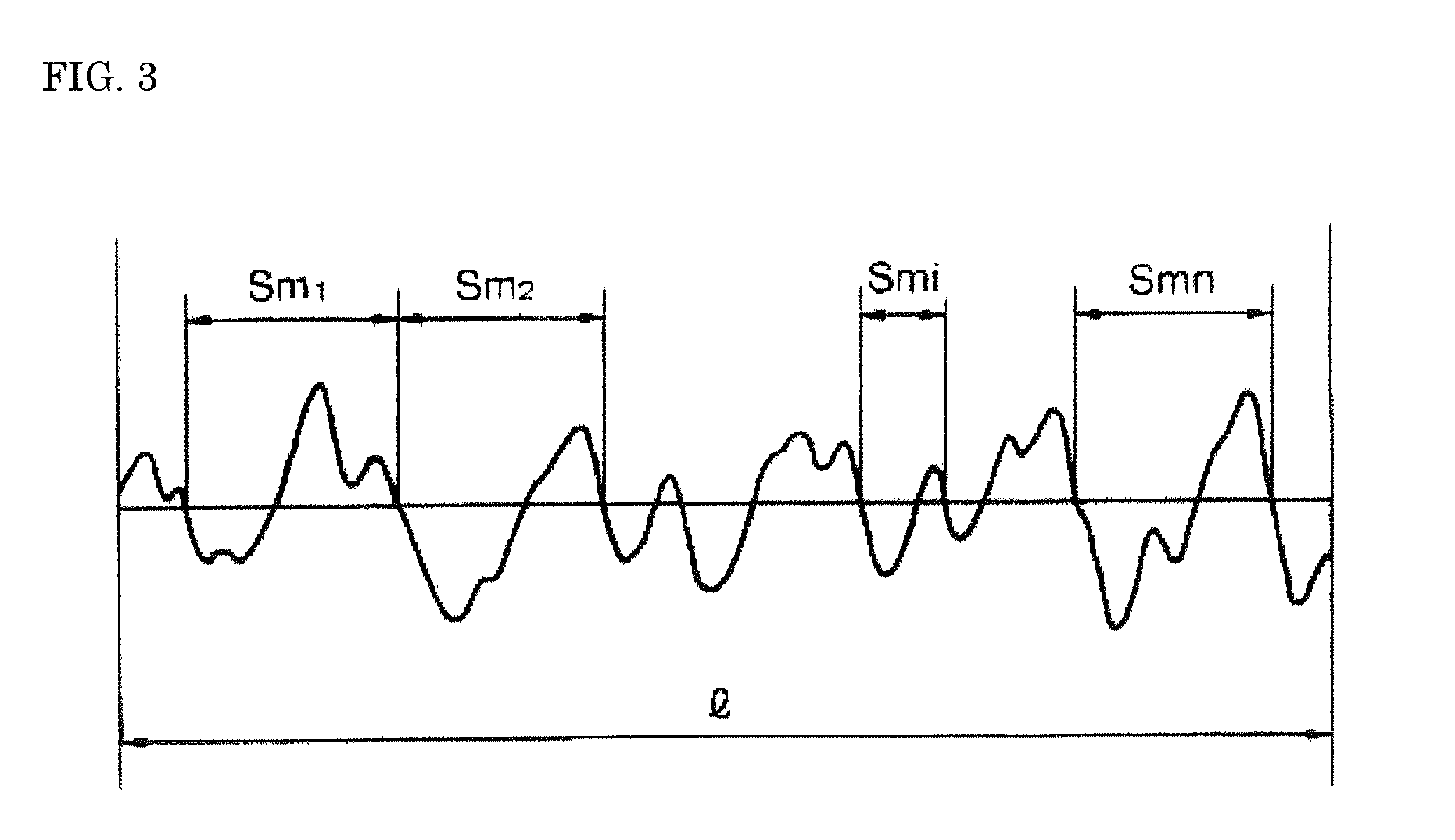Polymer film
a technology of polymer film and film film, applied in the field of polymer film, can solve the problems of low display quality and achieve the effects of low display quality, improved luminance, and negligible optical loss
- Summary
- Abstract
- Description
- Claims
- Application Information
AI Technical Summary
Benefits of technology
Problems solved by technology
Method used
Image
Examples
example 1
[0050]A pellet of a polycarbonate resin (Iupilon E-2000 produced by Mitsubishi Engineering-Plastics Corporation) was dried at 120° C. for 3 hours by a hot air drier. The resultant pellet was melt-extruded at 270° C. by a 90 mm monoaxial extruder and a T-die. The extruded melted film was nipped by a silicone rubber first cooling roll having a diameter of 220 mm and a metallic second cooling roll having a diameter of 450 mm and having an embossed surface with an arithmetic average roughness of 2.4 μm. Then, an emboss pattern was formed on a surface of the film. The film was cooled, and then passed through a metallic third cooling roll having a mirror surface. Thus, a film having a thickness of 130 μm with one surface being embossed was produced while being taken up by a take-up roll. In this procedure, the temperature of the first cooling roll was set to 50° C., the temperature of the second cooling roll was set to 130° C., and the temperature of the third cooling roll was set to 130°...
example 2
[0051]A pellet of a polycarbonate resin (Iupilon E-2000 produced by Mitsubishi Engineering-Plastics Corporation) was dried at 120° C. for 3 hours by a hot air drier. The resultant pellet was melt-extruded at 270° C. by a 90 mm monoaxial extruder and a T-die. The extruded melted film was nipped by a silicone rubber first cooling roll having a diameter of 220 mm and a metallic second cooling roll having a diameter of 450 mm and having an embossed surface with an arithmetic average roughness of 2.4 μm. Then, an emboss pattern was formed on a surface of the film. The film was cooled, and then passed through a metallic third cooling roll having a mirror surface. Thus, a film having a thickness of 75 μm with one surface being embossed was produced while being taken up by a take-up roll. In this procedure, the temperature of the first cooling roll was set to 60° C., the temperature of the second cooling roll was set to 135° C., and the temperature of the third cooling roll was set to 135° ...
PUM
| Property | Measurement | Unit |
|---|---|---|
| light transmittance | aaaaa | aaaaa |
| height Rz | aaaaa | aaaaa |
| height Rz | aaaaa | aaaaa |
Abstract
Description
Claims
Application Information
 Login to View More
Login to View More - R&D
- Intellectual Property
- Life Sciences
- Materials
- Tech Scout
- Unparalleled Data Quality
- Higher Quality Content
- 60% Fewer Hallucinations
Browse by: Latest US Patents, China's latest patents, Technical Efficacy Thesaurus, Application Domain, Technology Topic, Popular Technical Reports.
© 2025 PatSnap. All rights reserved.Legal|Privacy policy|Modern Slavery Act Transparency Statement|Sitemap|About US| Contact US: help@patsnap.com



